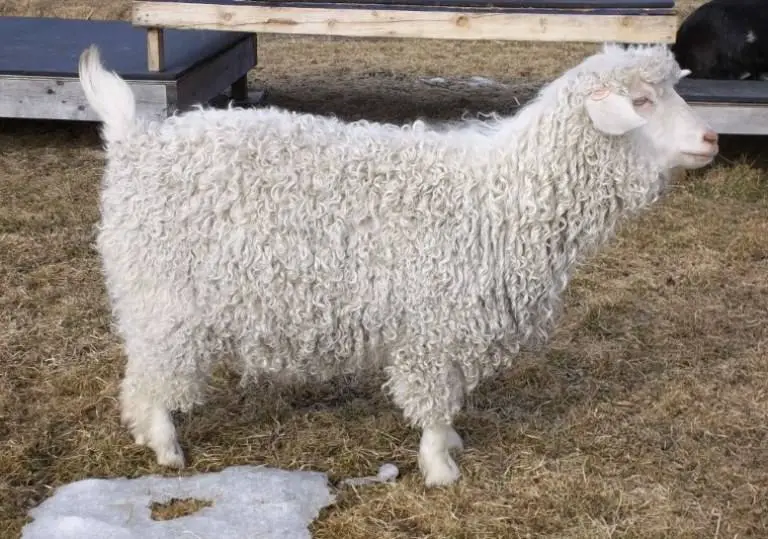No products in the cart.
Goat
Pygora Goat Breed For Fiber: Origin, Characteristics, Feed & Shearing
Are you looking for a goat breed that can produce high-quality fiber, especially meeting the requirements for fiber arts? Then, Pygora goats may just be the ones for you. An extra bonus is that they can also produce milk tasting as good as others.
Feeling intrigued? Read our article to know detailed information about this wonderful goat breed.
*This post may have affiliate links, which means I may receive commissions if you choose to purchase through links I provide (at no extra cost to you). As an Amazon Associate I earn from qualifying purchases. Please read my disclaimer for additional details.
What is a Pygora goat?
Pygora goats are fiber goats that have been specifically bred for fine hand-spinning fiber production. They produce a lot of great and soft fiber whose coarseness won’t change as the goats get older.
They are ideal fiber goats also because of their affectionate and engaging personality, excellent health, reasonable size, as well as a variety of coat colors.
Where did the Pygora goat originate from?
Pygoras were created in Oregon, America by Katharine Jorgensen. The PBA, the abbreviation of Pygora Breeders Association, was founded in 1987, responsible for maintaining the registry book.
The parent breeds of Pygoras are goats registered to AAGBA and NPGA. The only goats that can be called Pygoras are the ones that have been registered with the PBA. They must adhere to a set of standards covering physical appearance, color/patterns, and fleece characteristics.
Pygora goat fiber: What are Pygora goats good for?
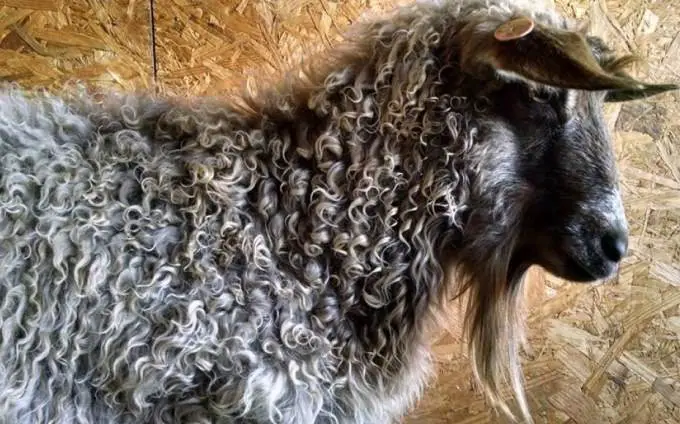
Since Pygora goats are fiber goats, they are well-known for their fleece. The Pygoras produce one of three kings of fleeces for spinners.
The first type is known as Angora which has long and lustrous curls. This fine mohair will grow to be 6 inches long.
The second type is the combination of Angora mohair and cashmere, the name of Pygoras’ soft Pygmy undercoat.
The final kind of fleece is cashmere that is a fine and non-lustrous fiber that measures between 1 and 3 inches in length.
There is no lanolin in Pygora fleece, so spinners should not overspin it. Its fiber blends well with other materials such as wool and silk. Shearing one Pygora can yield between six ounces and two pounds of fiber.
Pygora goat characteristics
Color
Pygoras are available in a variety of colors, including white, black, different shades of browns, caramels, and greys. During a year, the goats usually show two colors: a lighter undercoat and a darker outer coat.
Please refer to the PBA standards for more information on known colors and patterns.
Size
How big does a Pygora goat get? That’s probably one of the most common questions that anyone who is considering buying Pygora goats wonders.
The typical weight of female Pygoras is between 65 and 75 pounds, while that of their male counterparts is between 75 and 95 pounds. Depending on the mother goat, a Pygora goat baby weighs around 5 pounds at birth.
Height
Pygora does’ average shoulder height is 22 inches, while their male counterparts reach 27 inches tall on average.
Do Pygora goats have horns?
Yes, they do by nature. However, the PBA approves both goats with horns and those without horns.
Most PBA members disbud their goats when they were young to avoid them being tangled in field fencing or to provide better goats for 4-H projects. The choice of disbudding Pygoras is farmers’ personal preference.
Are Pygora goats friendly?
Yes, they are. Pygora are curious, amiable, and playful goats. They enjoy spending time with their humans. It’s essential to remember that, like any other animals, Pygoras need to be treated with affection and respect for them to become trusting, content, and sociable goats.
Are Pygora goats loud?
No, they aren’t. Pygora goats are adorable, friendly, and easy to keep.
Pygora goat breeders
Pygora goats are naturally good at breeding. One healthy adult Pygora buck can partner with a maximum of 30 does. However, if you raise Pygora goats commercially, you should use artificial breeding.
The duration of daylight is a big cause for female adult Pygoras to come into breeding season. Being near a Pygora buck also encourages does to cycle. The does’ average cycle lasts from 18 to 23 days.
They can have three kiddings in the span of two years. However, it will take a toll on the does and shouldn’t often be done. If it happens, these does require additional feeding and treatment.
Pygoras have a gestation period that lasts about 5 months, which is equivalent to 145-153 days.
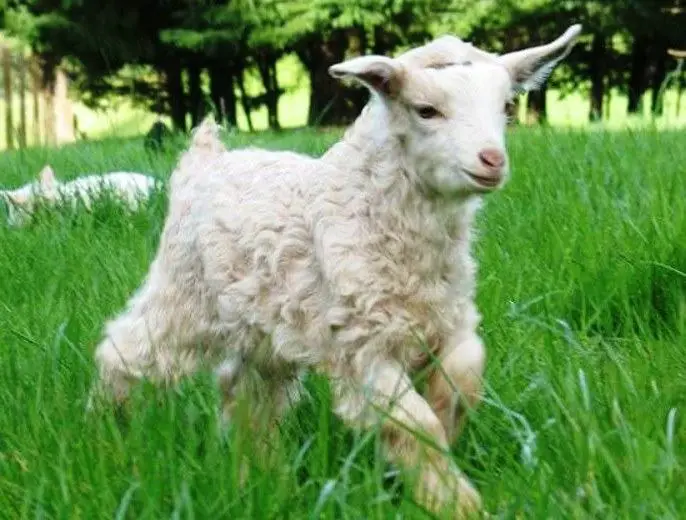
Pygora goat lifespan: How long do Pygora goats live?
Their average life expectancy ranges between 12 and 15 years if they are taken good care of.
Raising Pygora goats: What do Pygora goats eat?
Pygora goats are not picky eaters and don’t need any special diet. Their most common food is grass. However, other alternatives are hay and grain treats. You should consult your vet to find out the nutritional requirements of your goats.
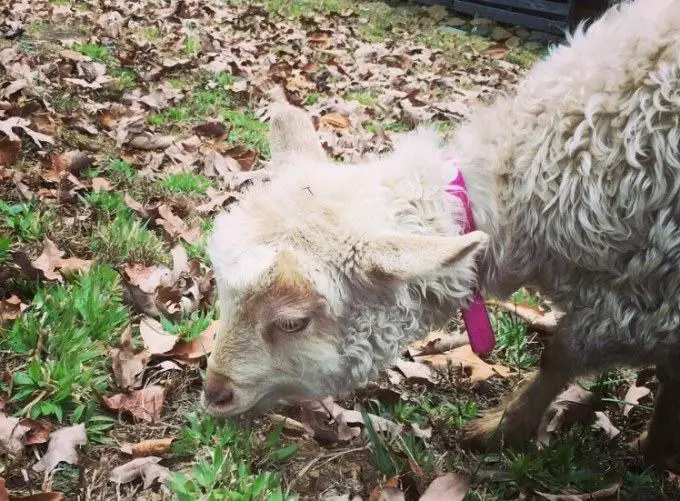
Pygora goat shearing: How to shear a Pygora goat?
Depending on the Pygora goats’ fleece and the weather, they’re usually sheared in the spring and fall.
Things to prepare
For trimming your goats, you can use an electric clipper or scissors. Other necessary tools include halter and bags used to collect the fiber. The use of a milking stand or similar stands is recommended for easier shearing sessions.
Begin to shear
Using scissors or electric clippers, make the first swipe. This swipe should be made along the goat’s top line with the direction from his tail to his shoulder.
Try to finish long, full swipes first, and don’t do cleanup swipes until your goat is fully sheared. After the first top-line swipe, the remaining swipes should be parallel lines to this initial line.
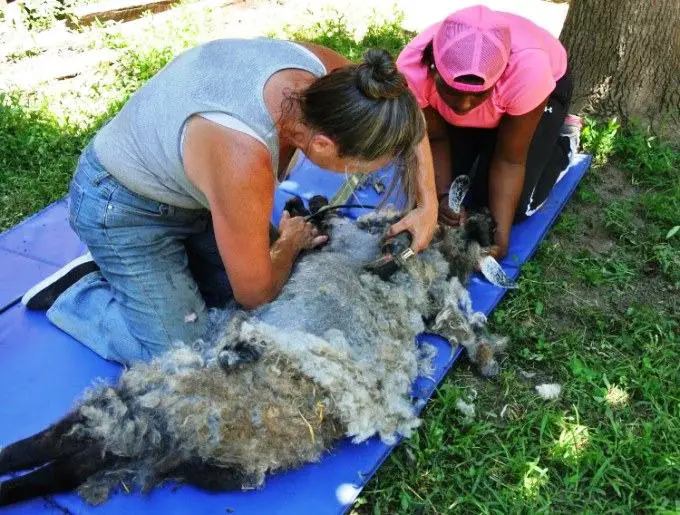
Things to notice
Short, choppy clips should be avoided because they will produce lots of short and unusable fiber.
In addition, remember to trim the goats’ armpits, around their ears, and top of their head. You should also avoid trimming the hair on the male goats’ penis because it helps steer their urine away from their body, which is necessary.
Pygora goat milk: Do you have to milk Pygora goats?
Yes. Besides producing fiber, Pygora goats also offer about 1 quart of milk per day.
Pygora goat price: How much do Pygora goats cost?
Initially, the Pygora goat’s cost is around $300. Their price variance depends on the breed size and their age (mature goats are more expensive than their young counterparts).
Also, the price difference is attributed to each goat’s production capabilities. The higher their capability, the more costly they are.
Where to buy Pygora goats?
There are different channels that you can use to purchase Pygora goats.
First, you can visit your local goat ranch and check if the owners are selling any of their animals.
Second, farmers often put ads in newspapers about their goats on sale. So, you should check your local paper to see whether there are goats on sale nearby.
Another channel is through registries and goat clubs. A typical example is the Pygora Breeders Association. The association members often advertise their goats and you may find your prospective goats in these organizations.
Lastly, directly access a website set up by a goat breeder and seek the goats that you’re interested in.
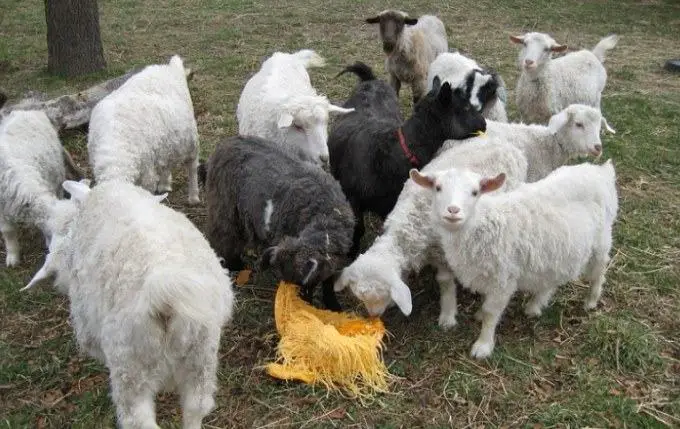
More Breed: Gulabi Goat A-Z Information
Final words
Our article has provided you with essential information about Pygora goats, including their origin, fiber, characteristics, and breeding habits. Some extra tips regarding how to shear and how to purchase these fiber goats are also provided. We hope that this article helps you find goats that are ideal for you.
